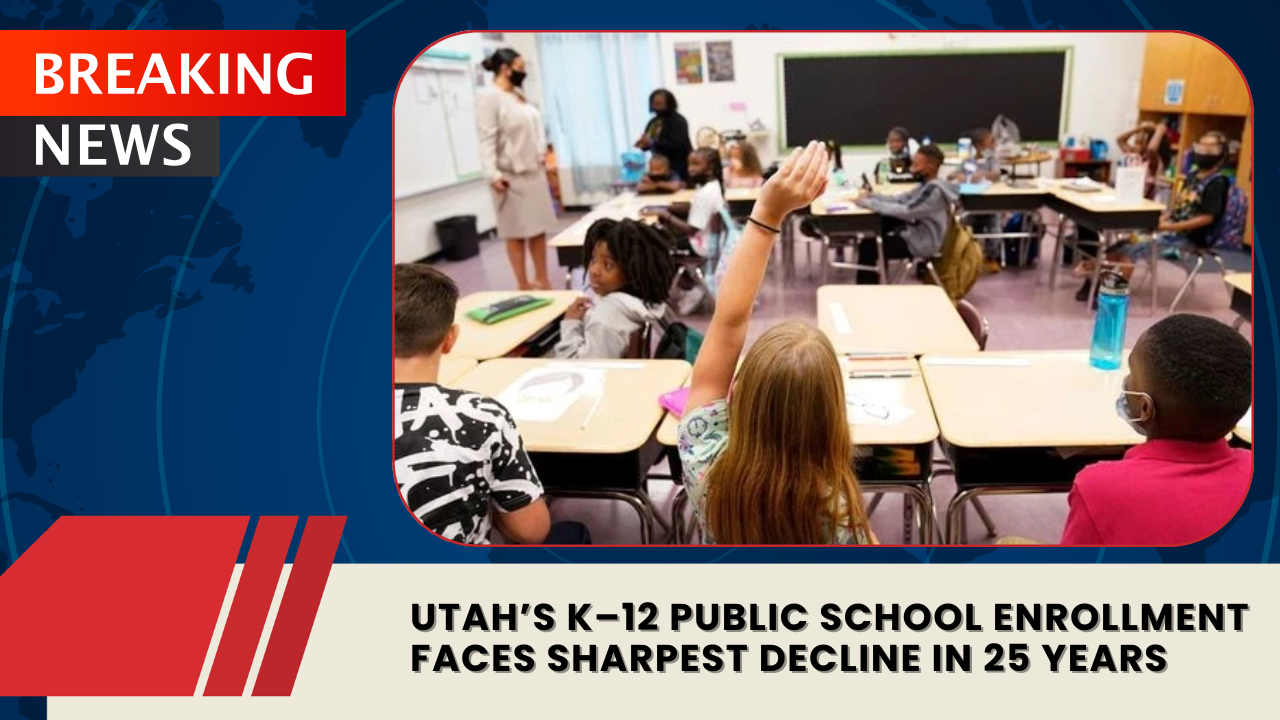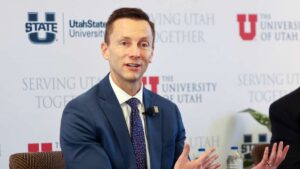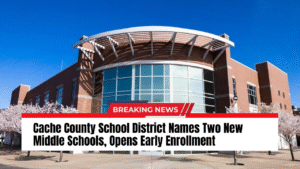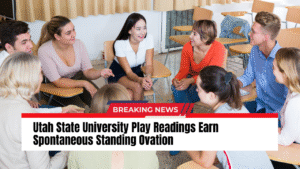SALT LAKE CITY — Utah’s public education system is confronting its steepest enrollment decline in more than two decades. New data released by the Utah State Board of Education reveals that for the 2025–26 school year, statewide K–12 enrollment fell by 11,478 students, a 1.7% decrease compared to last year — the largest drop in at least 25 years.
This sharp decline, which nearly tripled last year’s 0.7% decrease, raises concerns about potential school closures, teacher layoffs, and reduced state funding in the coming months.
Enrollment at a 10-Year Low
Utah currently has 656,311 K–12 students, down from 667,789 last year and 666,600 during the 2020 pandemic, when many families first shifted to homeschooling or online learning. The last three years combined have seen a total loss of 18,339 students — equivalent to the enrollment of more than five Westlake High Schools in the Alpine District.
State Superintendent Molly Hart said the numbers reflect broader national demographic shifts.
“Utah’s enrollment trends mirror what we’re seeing across the country — smaller birth cohorts, slower in-migration, and an expansion of school choice,” Hart explained.
Why Enrollment Is Falling
Several factors are driving this decline:
- Lower birth rates have led to smaller incoming kindergarten classes.
- Families are leaving traditional public schools for homeschooling or private education.
- The Utah Fits All voucher program has expanded options for parents seeking alternatives, though the state doesn’t yet track how many students have shifted to private schools.
Funding and Staffing Implications
Public school funding in Utah is tied directly to student enrollment. Fewer students mean less state money, which could force districts to consolidate or close schools. The Granite School District has already begun discussing closures of two elementary schools.
Of Utah’s 15 largest districts, 14 saw enrollment declines exceeding 1%.
- Salt Lake City, Granite, and Washington County school districts recorded the steepest drops at 4.5% each.
- Only Beaver County and Tooele County posted slight gains above 1%.
Charter schools, which often absorb families leaving traditional schools, grew by 3.6% this year and now represent 13% of the total public school population. However, even 44 of Utah’s 113 charter schools saw their own declines.
Changing Student Demographics
Despite shrinking numbers, Utah’s classrooms are becoming more diverse. Students of color now make up 31.2% of the total K–12 population, up from 30.6% last year. At the same time, the share of students requiring specialized educational services — such as English language learning or disability support — continues to grow.
Hart called this a “silver lining,” emphasizing that public schools remain committed to serving Utah’s most vulnerable learners.
“Our focus remains on ensuring that every child, in every community, continues to receive a high-quality education, regardless of statewide fluctuations,” she said.
The Road Ahead
Education experts warn that if enrollment continues to fall, Utah’s school system could see a permanent reorganization. With funding based on headcounts, rural and urban districts alike may need to restructure staffing, transportation, and facilities.
Meanwhile, the Utah State Board of Education is studying long-term impacts, including whether policies like the voucher expansion and demographic shifts will make this downturn a temporary correction or the start of a lasting trend.



